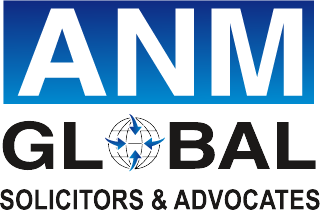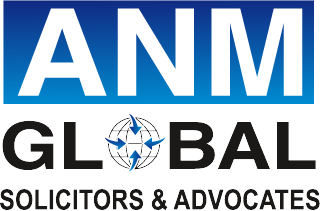Fast Tracking Patents Grants in India
By Ms. Ragini Shah, Partner and Ms. Natasha Menon, Associate
Obtaining a patent grant can be a meticulous and time-intensive procedure. In India, the grant of a patent may typically span from 3 to 4 years[1]. However, the Indian Patent Act, 1970 (“the Act”) encompasses certain provisions that can significantly expedite the process, if employed strategically. While we have seen timelines as short as 1.5 years, we’ve also learnt that there isn’t a thumb rule to such expedition but rather a mindful approach that starts with drafting, is required predominantly through prosecution and with the overall strategy. In this document we aim to share our insights and experiences. We believe the subject matter of a patent is of paramount importance especially in India. It is the core of the entire patent process as the success of a patent application hinges on the quality and relevance of the subject matter. Some common objections are illustrated under Part II below. Before we discuss the subject matter criteria in detail, a quick summary of the types of Fastrack options may be seen below.PART I: Fast Track Options
Organic Fastrack: The patent grant process involves several sequential stages: filing, publication, examination, and grant (in brief). Typically, an applicant must wait for 18 months before their application gets published and proceeds to the next stage and most often applicants will additionally wait for the deadline of the next stage (48 months from filing date) to approach until they file for a “request for examination” (RFE/Form 18) prolonging the “waiting period” alone to a long 48 months! What’s more is the queue associated with the RFE is long and demands a further waiting period, undefined in the Patent act. The Patent Office examines the application only after it has been published and has received an examination request[2], which is probably why applicants often assume that they must wait for the publication until they file a request for examination (Form 18). We have seen a rather beneficial outcome in timeline cuts by simply filing for a Form 18 at the time of filing the complete specification (at 12 months or earlier often as early as the filing date itself). This helps to jump the long queue that is associated with Form 18 and helps the Patent office to take up the Application as soon as possible post publication. A natural timeline using this strategy that we follow has shown a time frame of 3-3.5 years (average) from date of filing till grant at no additional Fastrack fees. Paid Fastrack: Furthermore, the Patent Rules, 2003 include statutory provisions that can fast track the process of obtaining a patent grant by paying a fee. One can start by filing a request for early publication using Form 9[3] and paying the prescribed government fee of INR 2500 (~USD 31 in case of natural person, small entity or start-up) or INR12500 (~USD 153 in case of others)[4]. This accelerates the patent’s publication, allowing the patent to be published earlier than 18 months and meeting the initial requirement for examination as prescribed by the Patent Office. Additionally, one can file a request for “Expedited Examination” by submitting Form 18A[5] along with the prescribed fee of INR 8000 (~ USD 98 in case of natural person, small entity or start-up) or INR 60,000 (~USD 732 in case of others). By submitting Form 18A, the applicant prompts the examiner to provide a report of examination typically within one to two months from the date of reference by the Controller[6]. A timeline using this strategy that we followed showed a time frame of 1.5-2.5 years (average) from date of filing till grant. The following category of people are eligible to file Form 18A under Rule 24C of the Patent Rules, 2003: Applicants who indicate India as the competent International Searching Authority or elect India as an International Preliminary Examining Authority; or- a start-up; or
- a small entity; or
- a natural person or in the case of joint applicants if at least one of the applicants is a female; or
- a department of the Government; or
- an institution established by a Central, Provincial or State Act, which is owned or controlled by the Government; or
- a Government company; or
- an institution wholly or substantially financed by the Government.
Promising Future Amendments to patent timelines:
The Ministry of Commerce and Industry, Department for Promotion of Industry and Internal Trade, has proposed a comprehensive set of draft amendments[7] to the existing Patents Rules by which further timeline reductions have been proposed to the 48 month period time frame to file for a request for examination, has been reduced to 31 months, except for applications submitted before the Draft Rules’ implementation. [8] Ministry of Commerce And Industry, 2023, “Draft Rules” (G.S.R. 619(E)), No. 484, Extraordinary Gazette, 22nd August, 2023 (avaialble at: https://ipindia.gov.in/writereaddata/Portal/Images/pdf/248296.pdf)PART II: Impact of subject matter on patent timelines
Subject matter of a patent as per Indian Law: Subject matter determines whether the invention meets the criteria for patentability as per the Indian Patent Act. One such criteria is whether the subject matter is recognized as an “invention”. In this regard, the Act identifies 15 subject matters that are not deemed as “inventions” under Section 3 of the Act. Should a subject matter fall within any of these 15 subsections, the application is likely to be objected by the Patent Office, thereby prolonging the patent process. A. Sec 3(d) : “the mere discovery of a new form of a known substance which does not result in the enhancement of the known efficacy of that substance or the mere discovery of any new property or new use for a known substance or of the mere use of a known process, machine or apparatus unless such known process results in a new product or employs at least one new reactant”. This section addresses the issue of “ever-greening,” a provision to arrest the practice of attempting to extend the patent protection of existing inventions/patents. Generally seen by making slight modifications to existing patents and presenting them as new inventions or patents, thereby gaining an extended period of protection for essentially the same invention. B. Section 3(f): “the mere arrangement or re-arrangement or duplication of known devices each functioning independently of one another in a known way” Section 3(f) of the Act acknowledges subject matter as non-patentable if the invention is a mere re-arrangement or assembly of two or more independent devices. Mere collocation of more than one integers or things, not involving the exercise of any inventive faculty, does not qualify for the grant of a patent.[9] E.g., an umbrella with fan (388/Bom/73), bucket fitted with torch, clock and transistor in a single cabinet. These are not patentable, since they are mere arrangement and rearrangement of items without having any working interrelationship between them and are devices capable of functioning independently of each other.[10] In order to be patentable, an improvement on something known before or a combination of different matters already known, should be something more than a mere workshop improvement; and must independently satisfy the test of invention or an ‘inventive step’. To be patentable, the improvement or the combination must produce a new result, or a new article or a better or cheaper article than before. A combination of old known integers may be so combined that by their working inter-relation, they produce a new process or an improved result.[11] C. Section 3(k): “a mathematical or business method or a computer programme per se or algorithms” This section views business models, computer programs, mathematical formulas/methods, and algorithms as non-patentable subject matter as they are not recognized as inventions. Consequently, subject matters falling within these categories may receive objections. A perusal of the above provision shows that the exclusion in respect of business methods is an absolute one and is not restricted by the words ‘per se’ as in the case of computer programs. In the case of computer programs, the use of the phrase ‘per se’ in effect means that a program per se is not patentable but when the same exhibits a technical effect or an advancement, or a technical contribution, the invention could become patentable.[12] However, while these concepts “per se” are not eligible for patents, they remain as clay to be moulded by a skilled patent agent to draft or amend foreign drafts prior to filing in India, in order to establish if in fact the subject matter may fall out of the Sec.3 ambit after all! Beyond the issue of subject matter, Objections may also arise on other aspects. Over time, a patent agent gains familiarity with the typical objections that may arise concerning issues raised by the Patent Office when an application fails to meet the statutory requirements outlined in the prevailing laws and guidelines. The objections may vary from incorrect power of attorney filings to insufficient demonstration of inventive step, and even formatting errors within the application. Unfortunately, receiving avoidable objections can significantly prolong the process of obtaining a patent grant. However, a skilled patent attorney, through years of experience, becomes well-versed in the potential objections certain subject matters may encounter and can artfully draft the application to pre-emptively circumvent these objections. For instance, when a patent relates to a software, the application draft if concentrates on establishing the functionality and the relation of the software with a hardware component stands a higher chance towards grant as opposed to an application that may give great details of the invention but merely highlights / claims the new features of the software.CONCLUSION
In conclusion, obtaining a patent grant in India can be a time-consuming process if filed without a streamlined strategy. Certain methods clubbed with use of statutory provisions can expedite this timeline significantly. By strategically utilizing options to “Fast track”, applicants may potentially receive a patent grant within a shorter period of even 2 years. Understanding the subject matter’s significance is crucial, as objections can arise and prolong the patent process, especially if the invention falls within non-patentable subject matter categories outlined in Section 3 of the Act. Skilled patent attorneys are assets to your patent application, as they are well-versed in potential objections and can pre-emptively circumvent these challenges, paving the way for a smoother and faster patent registration journey.– Ragini Shah (Head of Practice Patents & Designs) Partner, ANM Global & Natasha Menon, Associate




